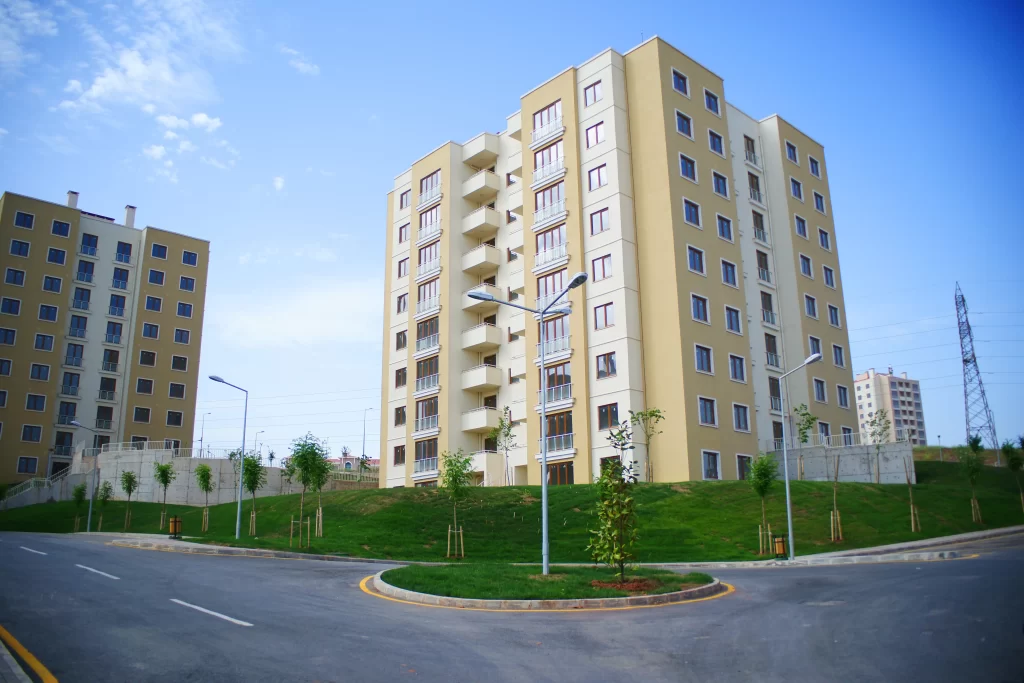Table of Contents
ToggleMultifamily real estate is one of the more popular investments for people who want to create long-term wealth. By retaining the overall ownership of these properties for longer durations, one can ensure consistent cash flow and an increase in the overall value of the properties. Individuals choose property flipping and renovations as ways to fight any market downturns, and multifamily units offer opportunities that add value over other real estate investments.
Another profitable venture in the multifamily real estate sector is renovating and acquiring properties to achieve better profits. The Multi-family asset class in real estate specifically talks about units that are developed for residential purposes. They consist of either a single structure or complexes with many independent units. They are also referred to as multifamily properties as they offer housing for multiple families. Here are some examples:
The Valuation of Multifamily Properties
The process of determining the value of a multifamily property is distinct from that of a single-family house. For instance, a multifamily complex that produces a yearly rental income of $1 million possesses greater value compared to one that generates $50,000, provided they are situated in the same submarket.
Value-add multifamily property operates in the following manner: Suppose you allocate $50,000 for investment and manage to increase the worth of the building by 50% within one year.
Within a year, you have the potential to recover 50% of your initial investment ($25,000) and allocate it towards another lucrative venture. The yearly return on investment of $5,000 stays constant. Instead of generating a return of $5,000 from an investment of $50,000, you would get the same $5,000 return with an investment of $25,000.
Furthermore, upon the sale of the home, you would not only recover your original investment but also get further value appreciation. Not every value-add transaction ensures such a high level of success. Occasionally, retaining the investment is the most prudent course of action.
Multifamily Property Improvement Strategies:
1. Developing Micro-Units:
A major approach to investing in the multifamily real estate market, micro-unit buildings have emerged in response to the rising need for inexpensive housing and the trend towards urbanization. The growing need for more compact and energy-efficient housing, especially in highly crowded metropolitan regions, is the inspiration for these new designs.
Maximizing space and usefulness, micro-units provide necessary living facilities in a tiny form. Typically, they range from 200 to 400 square feet. Not only does this method get around the problems caused by limited urban areas, but it also suits the tastes of a large population, especially young professionals and those living alone.
These people frequently value proximity and ease of access more than square footage, therefore micro-units are a good fit for them. Located in desirable metropolitan areas, these flats provide convenient access to public transit, restaurants, recreation, and cultural attractions in addition to workplaces.
2. Making Use of Data Analytics and Technology
Data analytics and cutting-edge innovation are changing the game for multifamily real estate investments. Smart investors are starting to see the huge potential these instruments have for getting ahead in the market. Utilizing advanced property management software is fundamental to this tech-driven strategy. In addition to centralizing the management of financial operations, these systems reduce administrative activities and property upkeep, boosting efficiency and lowering the chance of human mistake.
Furthermore, investors’ access to data analytics for market research is now crucial. They may obtain a more detailed understanding of tenant preferences and habits, spot new trends, and perform extensive market research by utilizing big data.
3. Independent Journeys
The old-fashioned way of looking for an apartment was to make a reservation with a lease agent, take time from work, and devote a lot of time seeing lots of homes. The way people look at flats, though, has altered due to self-guided tours.
Possibilities for potential tenants to take self-guided tours of the apartment building eliminate the requirement for an onsite leasing agent. Prospective tenants may access the apartment building via an app or a brass key, enabling guided tours to be made feasible via keyless entry technologies or a lock box solution. Property managers may save time and effort by offering self-guided tours, which are convenient for both potential tenants and themselves.
4. Centralization:
Property managers may now more easily manage their properties with the use of centralized software. Software for centralized property management allows for the streamlined administration of all property-related tasks, such as leasing, maintenance, rent collecting, and month-end closing. Using a task-based strategy to initiate the transfer of monthly administrative responsibilities from the local to the company level is a good way to get started.
5. Encourage Citizen Participation
Increased property value and resident satisfaction are both significantly impacted by a strong sense of community. Implement routine social gatherings, educational sessions, and wellness initiatives that encourage resident interaction.
Establish welcoming communal areas, such as barbecue zones or outdoor seating areas, to facilitate social interaction and relaxation for the residents. An enhanced sense of community not only facilitates the retention of current residents but also elevates the appeal of your multifamily property to prospective tenants.
To Conclude:
Having acquired important factors to consider while investing in and developing your multifamily property, it is now appropriate to proceed with the necessary actions to actualize your goal.
Choose some of the more innovative techniques to enhance the satisfaction of renters residing in multifamily flats. By doing this, you may secure their prolonged retention and enjoy the advantages of long-term investment.
Munshi Capital is the first step on your path to multifamily real estate wealth creation. Visit Amish Munshi to change the way you think about investing right now





